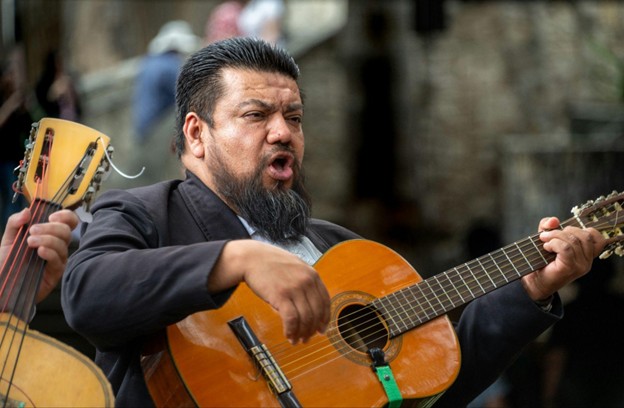Fashion, Culture, and Celebration: The Role of Live Bands in Events

Step into any big event and notice what grabs you first. It isn’t the food table. It’s not even the clothes—at least, not right away. It’s the sound. Music floats across the room and tells you instantly what kind of night you’re in for. Formal? Wild? Somewhere in between? That first impression usually comes from live instruments, not a Spotify playlist.
Style is more than fabric choices—it’s about how experiences are framed. And live bands frame them better than anything else. They don’t just play in the background. They set the energy. Runways become a theater. Weddings become goosebump moments. Festivals turn electric. That’s why live music continues to matter.
Why Live Bands Make Events Unforgettable
Playlists are neat. It could be too tidy. They never miss a beat, but they never surprise you either. Live bands? Whole different story. They read a crowd the way a comedian reads the room. If the audience looks restless, they crank it up. If the mood needs breathing space, they pull back. That ability to pivot makes people feel involved, rather than just entertained.
Picture a fashion gala. Lights drop. A model steps forward. Instead of a predictable track, the band jumps in. Heads turn. The show suddenly feels alive.
That’s why booking an award-winning brass band works so well for big celebrations. Their sound isn’t sterile—it’s booming, raw, joyful. Guests can’t help but react. They clap, cheer, maybe even dance before dessert is served. And when people tell stories about the night later, it won’t be about the napkins. It’ll be about that moment the band took control of the room.
The Fashion Connection: Music as Style’s Partner
Fashion feeds on atmosphere. Outfits don’t just walk a runway—they need a setting. And music has always been the partner that makes the statement louder. Think back to those iconic shows where designers hired orchestras or punk groups. The clothes weren’t just displayed. They were staged like a theater.
Music changes perception. A flowing dress paired with piano feels romantic. The same dress set against pounding drums? Suddenly it’s fierce. The clothes didn’t change—the story did.
Live music keeps things unpredictable. A drummer may add an extra punch, while a guitarist may hold a note longer. A design can become memorable with just a few minor adjustments. Recorded tracks can’t capture that kind of chemistry. That’s why so many shows rely on bands to sharpen their edge. People don’t just remember the fashion. They remember how the entire room felt.
Cultural Celebrations and the Rhythm of Tradition
Try to imagine a parade without horns. Or a wedding without drums. The scene instantly feels hollow. Across the world, live bands don’t just add decoration—they carry tradition.
In Mexico, mariachi groups wander wedding parties, bringing laughter and singing out of the guests. In India, brass bands lead the groom through the streets, where even passersby join the spectacle. In New Orleans, second line parades aren’t just fun—they’re cultural lifeblood, driven by trumpets and drums.
What makes it powerful is inclusivity. You don’t need to understand the words or know the customs. The rhythm draws you in. Before long, everyone claps in sync or dances shoulder to shoulder.
Without that sound, the celebration feels incomplete. With it, people connect to their roots and share the joy with others. That’s why live music isn’t just “nice to have” in many traditions. It’s non-negotiable. It’s the heartbeat that keeps culture moving forward.
Emotional Power: Why Guests Remember the Music
Years after an event, ask someone what they recall. Few will describe the exact centerpieces. Almost no one remembers the dessert. But the music? That sticks.
Live bands leave what psychologists call “emotional markers.” Because the performance happens once, with that group of people, in that place, it feels unique. Guests sense it. They carry it.
Think about a saxophone solo that erupts mid-reception. People cheer. Two generations suddenly share the same dance floor. Or a familiar melody played live—grandparents tear up, parents sing, kids jump in. That’s not a coincidence. That’s music tugging at memory.
It’s why certain songs can instantly pull someone back to a moment in their life. Live bands recreate those connections in real time. That immediacy means the celebration doesn’t just look good—it feels unforgettable. And when guests talk about it later, they won’t say, “Nice party.” They’ll say, “The music made it.”
Choosing the Right Band for the Right Celebration
Here’s the trick: not every band fits every event. Choosing carefully matters. A string quartet at a black-tie gala? Perfect. Brass at an outdoor festival? Absolutely.
The key is aligning the music with the mood. Small dinner? Acoustic sets create intimacy. Big crowd? People move to high-energy pop, brass, or funk. Something based on tradition is typically required for cultural celebrations. An unfluted Celtic wedding seems strange. A Brazilian parade without samba? Unthinkable.
Stage presence counts, too. A technically skilled band that hides in the corner won’t have the same effect as a slightly less polished group that knows how to own a stage.
Of course, mismatches can be funny in hindsight. Imagine a champagne toast with a heavy metal band playing. Yes, it was memorable, but not for the right reasons. When you choose the appropriate band, the music enhances the situation rather than detracts from it.

Photo by Joseph Corl from Unsplash
Conclusion: Celebrations Beyond the Surface
Décor fades. Food disappears. Outfits get packed away. However, the song endures in people’s minds. Live bands influence how people connect, how events feel, and what attendees remember. A celebration runs the risk of being forgotten without them. It turns into the kind of night that people talk about for years when they are with them.

